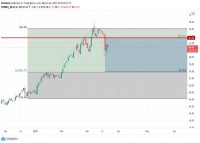|
In the Islamic Finance industry there is tremendous debate regarding specific changes, adherence and acceptance to standards, interpretation of sharia compliant and sharia based etc.-- all aimed at bringing about better understanding, usage and practices of Islamic Finance as an industry. The Islamic Finance practitioners know the industry inside out. But the world outside of the industry, comprised of would-be consumers and conventional finance practitioners are feeling detached or disenfranchised. Whilst regulatory bodies and the financial institutions debate over the specific interpretations, product structures, legislation etc., what image and understanding of this industry percolates amongst global citizens? The global Muslim community at 23% of the world’s population looks to be the primordial target market for the industry. Then again, are the various Islamic Financial instruments and products easily comprehended and accepted by people? Research undertaken by OIFI (see reference link) clearly show the lack of comprehension and understanding amongst, both, practitioners and end consumers. So whilst the industry betters itself from within, what of its perception from the outside? After all, in marketing, perception is akin to believing. Perhaps this opens up an opportunity area for the Islamic Finance industry, as a whole. An opportunity area of looking at best practices from the consumer products marketing category and using the learning to change perception and develop interest in the industry. How to do it? In today’s world of global netizens, communicating with one another at different parts of the world, in different time zones is available at the press of a button. The computer keyboard button that is. But at the same time, each consumer is an individual person with distinct opinions likes and dislikes. In consumer product marketing the world has moved onto using social media very extensively and in many innovative and creative ways. Social media, today, acts as the glue holding all of us, individuals, together across the globe. This glue is actually our individual interests that brings us together. And the one thing in common amongst us is that we all continuously use a minumum of one social media channel every single day. It’s this individual interest area that can be used to spread effective understanding of what is Islamic Finance. Let us start with the power of social media. This has been written about at length in terms of the power of social networking (see reference link) and its future potential (see reference link). Social media can be a mixed bag of tricks. Utilising it, effectively, requires having strong consumer insights, based on the multi-cultural aspects of the online communities, that are the foundation for an efficient social media strategy. Given the current debates of standards, retail product acceptance cross-borders, the need to focus on liquidity management, etc the issue is can social media be an effective way to spread the ideas/logic of Islamic Finance to widen the industry’s appeal and generate mass acceptance? Where there is a will, there is a way... Taking specific brand marketing learning from the consumer product sector, since the objective is to increase awareness and appeal (of the industry) it’s important to speak to the consumers in terms of their interests and their level of understanding and build that up over time. Some of the steps required:
What can Islamic Finance do on social media?
Such applications would fulfil two critical requirements: Initially they will build greater interest in the Islamic Finance industry from amongst the College/University students would shoot up. Thus bringing in a talent pool considering a career and enable the industry to have a good, forward thinking, solution oriented talent pool to deliver products based on consumer needs. Thereafter, the games and simulations will allow for non-industry based consumer to also look at the industry and its overall message. Thus the Islamic Finance products and instruments would start being evaluated on its economic benefits and thereby appealing to the non-Muslim community and be a part of mainstream finance. Introducing such options would enable the industry to communicate with the youth in their own language and interest areas thus drawing them to view (the information), participate (by playing the games or commenting on the trends for e.g.) and start to have a better understanding of what the Islamic Finance industry is all about. Such consumer fulfillment would lead to engagement between the industry and their end users. This engagement would lead to comprehension (most importantly) of Islamic Finance leading to demand generation which in turn would lead to development of products that the market needs and thus provide a sustainable and profitable business operation for the IFI. So where do we start? A concerted effort from all corners of the industry would need to come into play. First of all, utilise the individual social networks of key industry leaders across geographical markets with online blogs/forums to enable the netizens to share their thoughts and comments. Furthermore, institutional bodies within the industry entrusted with development of standards and education (of Islamic Finance) to start implementing interest based social media activity to develop a fan following. The question is are we ready to accept cross industry best practices in order to de-mystify Islamic Finance and merge it into the global financial sector as a sustainable and beneficial industry that benefits organisations, individuals and as result society? For only when we open ourselves up to accepting change, can Islamic Finance effectively go viral. Your feedback and comments are very important to us, please feel free to contact the author via email. |
Opalesque Islamic Finance Intelligence
Opinion Column: Islamic Finance - Niche or Ubiquitous By Joy Abdullah |
|





 RSS
RSS








